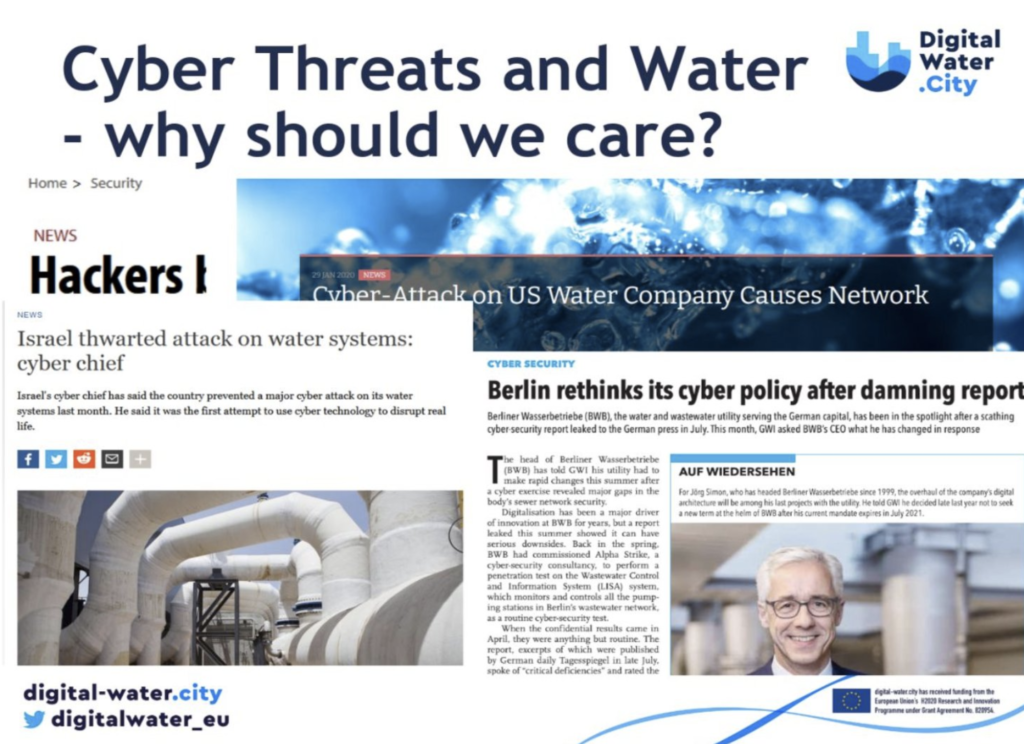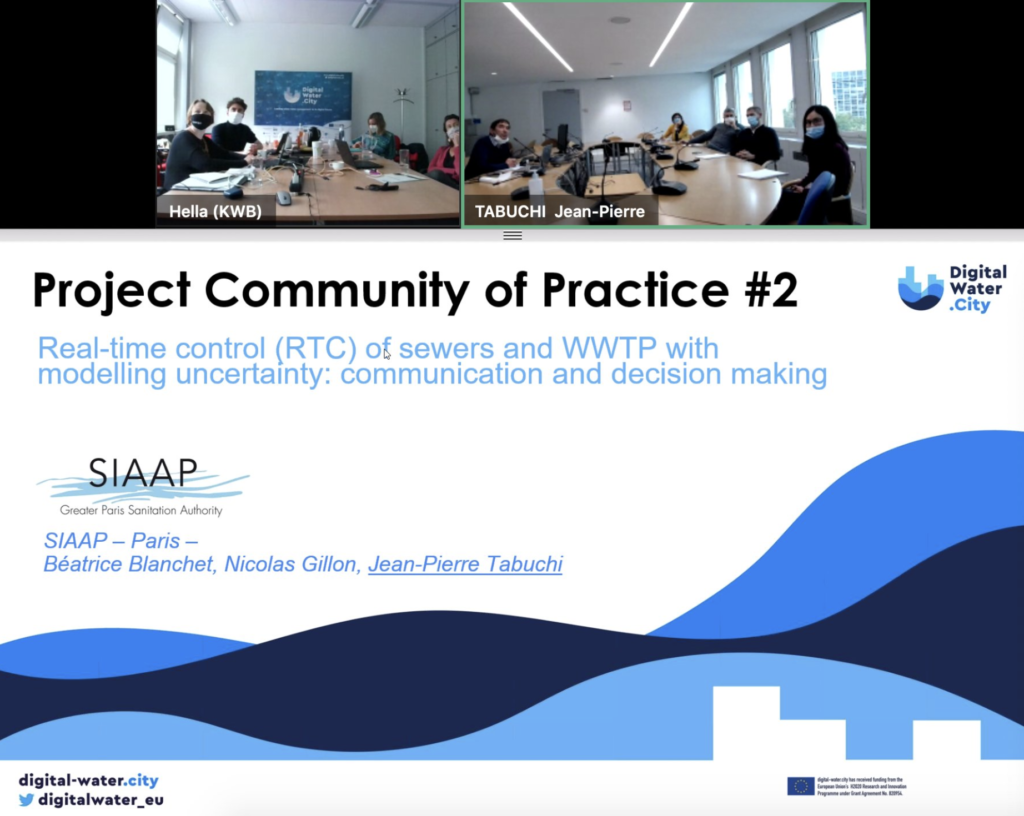6 October 2020 saw digital-water.city hold its second project Community of Practice (CoP) meeting, bringing together our cities’ stakeholders to discuss the transferability of the solutions developed in DWC as well as common issues linked to digitalisation such as interoperability. The online event was split into two sessions: one on cybersecurity in the water sector; the second on real-time control of sewer systems and wastewater treatment plants (WWTPs).
Led by DWC partner SINTEF, the cybersecurity CoP aimed to create awareness among our utility partners and water professionals on the importance of appropriate risk management related to cybersecurity. Participants listened to an overview of the kind of cyber threats that can impact the water sector – including some unsettling examples of industrial hacking of cyber-physical systems that led to system outages and long-term damages. One objective of DWC is to counter these threats by creating a cyber-related risk events registry for the digital solutions being trialled. SINTEF presented their approach and action plan for this, before inviting participants to contribute to a Risk Identification Database in a collaborative exercise, identifying threats that relate specifically to solutions at different stages of the water cycle. The database will be expanded and refined over the course of the project, serving as the basis for proposing solutions to reduce cyber risks at strategic, tactical and operational levels and promote resiliency against threats.

The second CoP session on real-time control of sewer systems and WWTPs featured presentations from four DWC partners working on digital solutions in this area. Paris-based SIAAP presented the MAGES system that combines weather forecast data, field data from 2000 sensors and incident/maintenance data, feeding this into hydrological and hydraulic models to provide information on territory, water levels and flow prediction. Berlin water utility BWB gave an overview of solutions in operation in the city, such as the smartLISA system: by running simulations to show metrics like flow and pressure in real time at a very detailed street level, this can pinpoint issues to a precise location. Gruppo CAP explained how it is using inflow and infiltration detection systems in combined sewer systems in Milan, including methods like evaluation of interferences between sewer system and surface/groundwater, periscope and CCTV inspections, electrical conductivity analysis and temperature analysis with sensors/fibre optics (DTS). Finally, Biofos provided an update on the solutions it is developing to support the integrated control of sewers and WWTPs, including the SAMDUS web platform being trialled in DWC: an interoperable visualisation platform that provides data and analytics to all stakeholders responsible for the integrated management of sewer networks and WWTPs in an urban area.

The DWC CoPs aim to provide a forum for project partners and external stakeholders to come together to facilitate co-learning and co-development. The CoPs follow a three-tiered scheme: local level (city scale), intra-project level and trans-project level.
